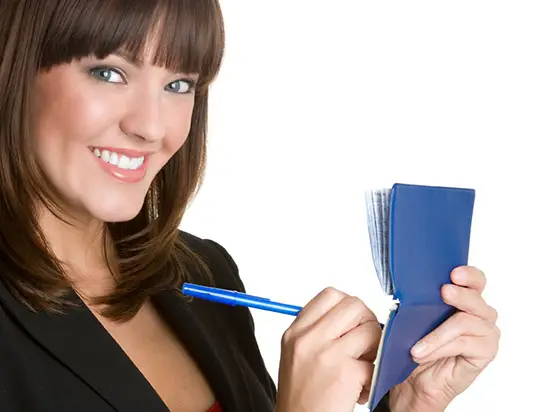Managing Your Checkbook

Do you know how to balance a checkbook? Do you have overdraft protection or even know what that is? Do you use a debit card? Most college students regularly use a checking account, but many students don't know the important aspects of handling a checking account.
The Checkbook Balancing Act
It is extremely important to regularly balance your checkbook, especially if you use your debit card for purchases. Most ATMs will give you a receipt with your withdrawal, but the balance shown is not always accurate. The computer systems at many banks take 24-48 hours to update, meaning that if you have any outstanding checks that have not been accounted for by your bank, the balance on that ATM receipt is not accurate.
Balancing a checkbook requires that you keep track of all of the transactions you have made through your checking account. When you are balancing your checkbook, record all the checks you have written and any withdrawals you have made. Make sure you take a good look at the sample checking account statement included at the end of the PDF version of this article.
Managing your account
- Make a check mark in your check register next to all the withdrawals and checks that have been paid by the bank. Your statement will have a list of paid checks and withdrawals.
- Total the withdrawals and checks that have not yet been paid by the bank.
- Put a check mark in your check register next to all the deposits that appear on your bank statement.
- Total the deposits that do not appear on your bank statement.
- Record any bank charges in your check register that are reflected on your bank statement.
- Add the ending balance on your statement to the deposits that do not appear on your statement.
- Subtract the withdrawals and checks that have not been paid by the bank from your total in step #6. This number should be your current balance and be equal to your checkbook balance.
Overdraft protection
Banks offer overdraft protection to prevent bounced checks. You may be thinking that you will never write a check that will bounce, but it happens to the best of us. Below are the common ways that banks offer overdraft protection:
- Checking linked to Savings: If your checking account does not have the funds to cover a check or debit, money will be taken from your savings account to cover the amount. The bank charges a fee for the overdraft.
- Credit Card: Many banks offer credit cards that are used in case of an overdraft. Sometimes banks will allow you to link one of your current credit cards so you do not have to open another credit account. While this is a great option for overdraft protection, the banks will often transfer more than what was needed to cover the overdraft. Ask your bank about this overdraft option. Find out how much money they will transfer in case of an overdraft.
- Line of Credit: If you establish a line of credit, which is basically an agreement by the bank to lend up to a specific amount to a borrower, the bank transfers money from your line of credit to cover any overdrafts made on your account. Interest is then charged on the amount of money transferred from the line of credit.
Some banks will automatically enroll checking account customers who have not already signed up for a traditional form of overdraft protection, into a program where the bank covers overdrafts for a fee. However, banks charge high fees to do this and usually give you just a few days to bring the account back to a positive balance (what happens if you don't bring account back?). Banks charge a flat fee of up to $35.00 for each overdraft.
Debit cards
When you open an account with a bank, you will very likely be offered a debit card. Many financial institutions offer debit cards that not only work at ATMs, but also carry the VISA or MasterCard logo and can be used as a credit card. Purchases made with your debit card are automatically deducted from your checking account. Debit cards do not carry interest rates and do not have grace periods, so you'd better have the money in your account at the time you make the purchase! Debit cards are not reflected on your credit report.
Direct deposit
If you are working, you can ask your employer if they offer direct deposit. Direct deposit is the phrase used to describe the electronic transferal of your paycheck from your employer's account to your bank account. Many banks will lower or even eliminate your bank fees if you use direct deposit. Utilizing direct deposit is also very convenient because you do not have to go to the bank to deposit your paycheck and you have immediate access to your money.
Don't let your checking account intimidate you. With the proper knowledge and tools, you will be able to accurately manage your account!
